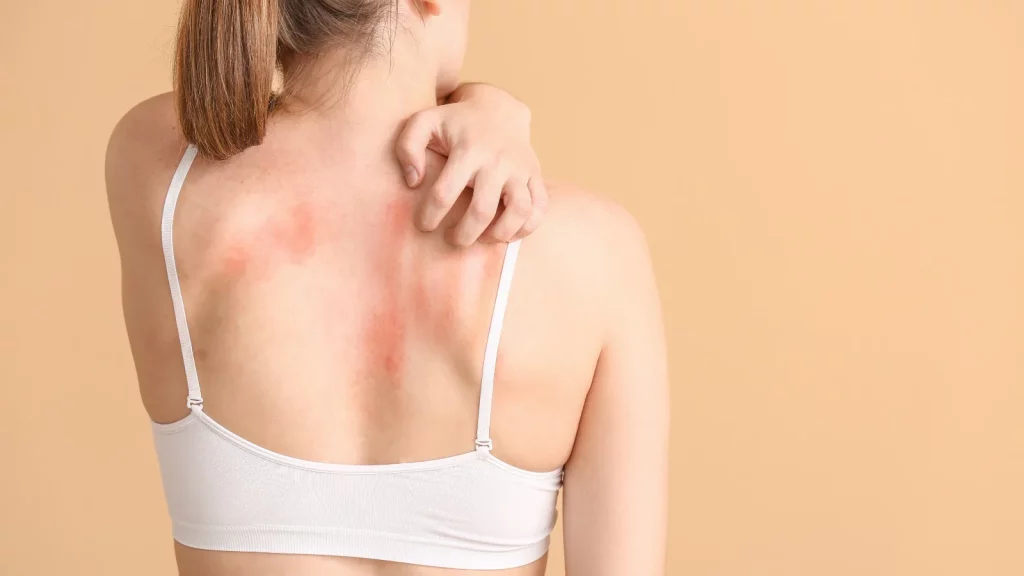Jock itch, scientifically known as tinea cruris, is a common fungal infection that affects the groin area, inner thighs, and buttocks. Despite its name, it is not exclusively limited to athletes, as anyone can develop this uncomfortable and bothersome condition. In this article, we will explore the causes, symptoms, and effective treatments for jock itch.
Causes:
Jock itch is primarily caused by a group of fungi called dermatophytes, which thrive in warm, moist environments. The groin area provides the ideal conditions for these fungi to grow, especially in individuals who engage in activities that cause sweating and friction, such as athletes. “Dermatophytes are opportunistic fungi that can easily colonize areas of the body where moisture and warmth are prevalent, making the groin an ideal target,” explains Dr. Sandra Lee, a dermatologist at Skin Health Clinic.
However, non-athletes can also develop jock itch due to factors like tight clothing, excessive moisture, poor hygiene, or weakened immune systems. A study published in the *Journal of Clinical and Aesthetic Dermatology* found that individuals with compromised immune systems, such as those with diabetes or HIV, are at a higher risk of developing dermatophyte infections, including jock itch. This highlights the importance of maintaining good hygiene and monitoring any underlying health conditions to prevent the onset of such infections.
Symptoms:
The symptoms of jock itch typically manifest as a red, itchy rash in the groin area. Some common signs and symptoms include:
Itching and burning sensation: Jock itch often begins with mild itching and discomfort. As the infection progresses, the itching can become intense and unbearable.
Redness and rash: The affected area may develop a raised, red rash that can extend from the groin to the inner thighs and buttocks. The rash may have defined edges and small, red bumps or blisters.
Scaling and peeling: The skin affected by jock itch may become dry, scaly, and start to peel. This can cause further irritation and discomfort.
Foul odor: In some cases, jock itch can lead to a foul odor due to the accumulation of sweat and bacteria in the affected area.
Effective Treatments:
Fortunately, jock itch can be effectively treated with various over-the-counter antifungal medications and simple self-care measures. Here are some treatment options:
Topical antifungal creams: Several over-the-counter creams and ointments contain antifungal agents like clotrimazole, terbinafine, or miconazole. These medications help kill the fungi and relieve the symptoms. It is essential to follow the instructions carefully and continue treatment even after the rash disappears to prevent a recurrence.
Keep the affected area clean and dry: Maintaining good hygiene is crucial in managing jock itch. Wash the affected area gently with mild soap and water, and pat it dry with a clean towel. Avoid using harsh soaps or scrubbing vigorously, as this can aggravate the irritation.
Wear loose-fitting clothing: Tight clothing can trap moisture and promote fungal growth. Opt for loose-fitting underwear and breathable fabrics to keep the groin area dry and reduce friction.
Use antifungal powders: Applying antifungal powders, particularly those containing ingredients like miconazole or clotrimazole, can help absorb moisture and prevent the spread of fungi.
Avoid sharing personal items: To prevent the spread of the infection, avoid sharing towels, clothing, or sports equipment with others. Fungi can survive on these surfaces and spread to other individuals.
Consult a healthcare professional: If the jock itch does not improve with over-the-counter treatments or if it worsens, it is advisable to seek medical attention. “Persistent jock itch might indicate a more serious infection or an underlying condition that requires a tailored treatment plan,” advises Dr. Emily Stevens, a renowned dermatologist at Skin Health Journal. A healthcare professional can prescribe stronger antifungal medications or recommend alternative treatments if necessary.
Prevention
Preventing jock itch is often more manageable than treating an existing infection. Here are some preventive measures to reduce the risk of developing jock itch:
- Keep the groin area clean and dry: After exercising or sweating, promptly wash and dry the groin area thoroughly.
- Change underwear daily: Wearing clean underwear and changing it daily can help minimize the risk of fungal growth.
- Avoid tight-fitting clothing: Opt for loose-fitting clothes made from breathable fabrics to reduce moisture and friction.
- Practice good hygiene in public areas: Use clean towels and avoid sitting on shared surfaces in public areas like gyms or locker rooms.
Conclusion
Jock itch can be an uncomfortable and bothersome condition, but with proper treatment and preventive measures, it can be managed effectively. If symptoms persist or worsen, it is essential to consult a healthcare professional for an accurate diagnosis and tailored treatment plan. “The key to managing jock itch is consistent hygiene and early intervention. Keeping the area clean and dry significantly reduces the risk of fungal growth,” says Dr. Emily Harper, a dermatologist from Skin Health Journal. By maintaining good hygiene, keeping the affected area clean and dry, and using appropriate antifungal medications, individuals can overcome jock itch and prevent its recurrence, leading to a healthier and more comfortable life.
